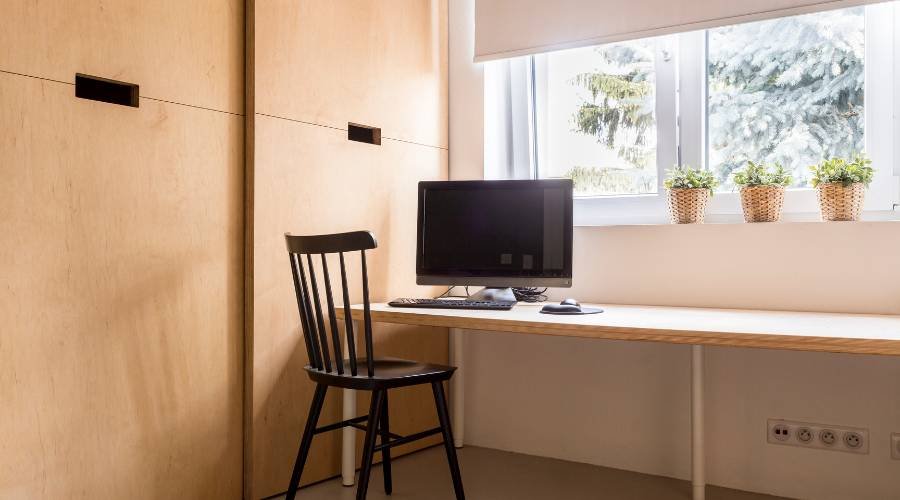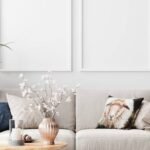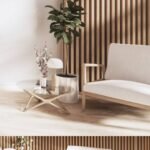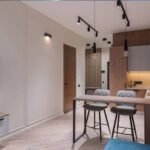Exploring Kit Homes
So, we’re buzzing about kit homes, also known as prefab homes. Imagine the ease of popping your dream home together like a giant Lego set! It’s a winning strategy for those chasing down comfy digs without breaking the bank. From families to start-ups needing office space, kit homes tick all the boxes.
Understanding Kit Home Construction
Alright, let’s get into how these kit homes come together. It’s like a puzzle but way cooler. These homes come in pieces with all the trusses and walls built ahead of time, somewhere not too far from Jurassic Park. Once ready, they’re shipped to your land and quickly assembled, either by you or a pro builder. The freedom to choose who puts the jigsaw together is a neat part of the package.
Speed and cost-saving are the real champions here. Less time under construction means less cash flowing out of your wallet. Here’s a quick look at how they stack up:

| Feature | Kit Homes | Traditional Homes |
|---|---|---|
| Assembly Method | Puzzle pieces to put together on-site | All the work’s done on the spot |
| Build Time | Zippy, quick-as-you-like can | n take its sweet time |
| Customisation | Options straight from the catalogue | Build whatever’s in your mind’s eye |
| Cost Efficiency | Bargain central | Gonna cost a bit more due to tons of labour |
Cost Considerations for Kit Homes
Now, let’s chat dollars. Kit homes are like the thrift store find of the housing market. For instance, snagging an 85 m² beauty, packed with two bedrooms and a bathroom, can run you about $114,000. That’s roughly $1,300 per square metre. Thanks, Australian Bureau of Statistics (ABS)!
Check out a few cost details you might bump into:
| Component | Estimated Cost |
|---|---|
| Kit Home Base Price | Around $114,000 for 85 m² |
| Assembly Costs | Depends on whether you’re the builder or hiring one |
| Extra Goodies | This one’s on you – varies with your picks |
This budget-friendly option won’t just set the tone for your initial spend but could have you saving from ground-breaking to moving the sofa in. Make sure you shop around, especially if you’re checking out folks who are into prefabricated houses, Sydney, or modular homes, Sydney. Do your homework before signing on the dotted line!
Advantages of Kit Homes
Kit homes are making waves in Sydney for good reasons. They’re ideal for folks, families, and even businesses. Let’s chat about why they’re such a smart choice, especially when we focus on how they save us a stack of time and cash while offering a bit of that sweet balance between ready-made designs and personal touches.
Time and Cost Savings
Right off the bat, kit homes have a knack for saving both time and money. The building process is quick and easy thanks to their ready-to-go design, which makes things a breeze on site. They arrive at your location all boxed up from the factory and can be put together by either you (if you’re feeling hands-on) or a pro contractor. This setup cuts down big time on all those costly material hunts.
Take, for example, estimates that suggest the kit itself makes up only about a quarter of the total bill, including the builder’s fee. Here’s how it slices up:
| Cost Breakdown | Estimated Percentage |
|---|---|
| Kit Home Cost | 25% |
| Construction Labour | 30% |
| Additional Expenses | 45% |
| Total Project Cost | 100% |
Imagine forking out around $15,000 for the kit itself, and when you tally up everything—like extras and finishing touches—you reach a total budget of roughly $60,000. While the price can play ball with traditional homes, you’ll find some wallet-friendly deals out there, especially if we dig into affordable prefab homes in Sydney.
Standardized Design vs. Customization
Sure, kit homes save us a pretty penny, but there’s a flip side—limited room for sprucing them up. Pre-set designs mean they’re cheaper, yet they’re like that comfy old shoe: you can’t change its shape too much. But hey, some companies throw us a bone by letting us adjust bits here and there, making the place our very own without breaking the bank.
If we’ve got our hearts set on something more ‘us’, it’s all about weighing the ease of a kit home against the wide-open creativity of modular homes, Sydney, or bespoke builds. Balancing the dream of homeownership with a touch of our flair means picking what jives best with our style and budget.
By getting the scoop on these perks, we’re geared up to sift through options in the world of prefabricated houses in Sydney and make smart choices for where we hang our hats. Whether we roll with the straightforward vibe of a kit home or dive into a custom gig, these homes promise comfort and won’t empty our pockets.
History of Kit Homes
Evolution of Kit Home Companies
It’s pretty wild to think that, way back between 1908 and 1940, over 100,000 kit homes were popping up all over the United States. Thanks to big names like Sears, Roebuck, Gordon-Van Tine, Montgomery Ward, and Harris Brothers, the dream of owning a place wasn’t just for the elite. They packaged up all the stuff you’d need to build your own house and shipped it off to you, making having a home something almost anyone could aim for.
Things took a turn, though. When money got tight, especially during the Great Depression, many businesses either went bust or shifted gears back to selling just building stuff rather than whole homes. This change painted a pretty clear picture of how unstable the housing market can be, and just how much folks needed a cheaper way to live.
Fast-forward a few decades, and kit homes were still hanging in there. Companies like Lowe’s gave the concept another shot with the Katrina Cottages. These were meant for folks who were hit hard by Hurricane Katrina and needed sturdy, temporary digs. While not everyone was on board with the idea, and it eventually got canned, it was a fresh twist on the old kit home vibe.
Impact of Economic Factors
The lure of kit homes has always had a lot to do with what the bank account’s looking like. They’re easy on the wallet and come together fast, which is a win-win when money’s tight. For families and budding entrepreneurs, they’re like the perfect middle ground, providing comfort without draining the savings.
In Australia, kit homes have also caught on due to a growing interest in eco-friendly living. These structures are often built with the planet in mind, which scores them points with those keen on tackling climate change. This is why options like kit homes Sydney are all the rage, fitting right in with sustainable living and sensible budgets.
| Period | Economic Factors | Kit Home Development |
|---|---|---|
| 1908-1940 | Boom times and easy access | Over 100,000 homes built in the US |
| 1930s | The Great Depression hits | Some companies exit, others focus on materials |
| 2006 | After natural disasters | Katrina Cottages make an appearance at Lowe’s |
So, looking at how kit home companies have changed over time, along with the influence of economic twists and turns, it’s clear why they’ve still got legs today. They’re affordable, you can make them suit your style, and they’re made to save on energy, ticking all the boxes for modern living. If diving into prefab options is your thing, our articles on modular homes in Sydney and prefabricated houses in Sydney are worth a peek.
Relevance of Kit Homes Today
When it comes to deciding on our digs in Sydney, kit homes are making waves for being practical and easy on the wallet. More folks are jumping on the bandwagon, especially with the buzz around green living and smart building practices. It’s like the modern twist on owning a home.
Current Market Trends
Kit homes are catching on, and for good reason. They’re the poster child for how to make housing easy to get into and not break the bank. In Melbourne, folks are dropping around £1,390 per square metre for a new house, but kit homes come in at about £3,000 per metre because of their top-notch finishes. Sydney’s love affair with prefab homes is all about:
| Feature | Kit Homes | Traditional Homes |
|---|---|---|
| Build Time | Quicker thanks to being built beforehand | Slower since it’s all done on-site |
| Custom Choices | People might think they’re limited, but there’s a lots to pick from | Lots of room to make it your own |
| Wallet Friendliness | Budget-friendly, especially if you keep it simple | Costs tend to be steeper |
These trends show how kit homes can bridge the gap between getting a place quickly and not spending a fortune. They’re shaking up the market landscape.
Comparison to Traditional Home Building
Stacking kit homes up against old-school building methods uncovers some real perks and pokes holes in some myths about modular homes. Old-school homes come with big price tags and can take forever to build, but kit homes cut right through those hurdles.
Sometimes, folks look down on these modular homes in Australia, thinking they’re just stopgap shelters for emergencies. But kit homes are built to last, focusing on strong builds, planet-friendly designs, and making good use of every square inch. They offer a way to get into a home that doesn’t strap you down with endless payments, like traditional homes do.
With kit homes, individuals, families, and even businesses can roll out inviting, affordable places to live. The surge in choices like prefab houses and granny flats in Sydney opens doors for us to put together a home that matches our way of living, minus the eye-watering costs of typical homes. The kit home journey shows how we can switch up our housing game to fit modern-day wants and needs, making life a tad bit easier.
Building Kit Homes in Australia
Building kit homes Down Under is like piecing together a massive jigsaw puzzle, except this puzzle ends up being your cozy new home. We gotta keep our eye on local rules and tap into handy resources to make our kit home dreams a reality.
Planning and Regulations
Before we lift a finger on our kit homes in Sydney, the first order of business is wrangling those local council rules. That means it’s paperwork time—snagging the right permits, playing nice with zoning laws, and hitting those safety checkboxes.
Here’s a cheat sheet of what to keep in mind:
| Consideration | Description |
|---|---|
| Local Council Regulations | Different strokes for different folks, each council’s got its building playbook. |
| Permits Required | Can’t skip this one, a building permit is the golden ticket to start swinging hammers. |
| Environmental Assessments | Gotta make sure we’re not stepping on Mother Nature’s toes. Some spots might ask for a closer look at that. |
| Design Compliance | Ain’t the wild west here, kit homes must play by Aussie building rules. |
Chatting with local council folks early on will keep us sailing smoothly. Checking out handy guides like the “DIY Flat Pack Granny Flats” can give us a leg up.
Available Resources and Assistance
There’s a bunch of help out there for folks wanting kit homes. Loads of companies hand out roadmaps to steer us clear of any bumps along the way. Let’s take advantage so our building adventure is a blast.
Take the helpful read “Build Your Own DIY Granny Flat on a Budget: QBCC’s Guide for Queenslanders”. This one’s pure gold for those of us in Queensland. Websites might even offer custom services for anything from planning to that sweet moment when the keys are ours.
Got questions? Prestige Kit Homes will lend a hand, offering backups for cyclone-grade houses with sturdy timber or steel frames. We’re talking homes that laugh in the face of wild weather.
Need a more personal touch? No problem! Drop a line at:
- Phone: 07 2800 6779
- Email: info@selectkithomes.com.au
- Address: 76 Chetwynd Street, Loganholme, QLD 4129
Riding the waves of regulations and tapping into these handy resources means our kit home adventure in Sydney will not just be a success, but a whole lotta fun, too. Fancy more options? Peek at modular homes in Sydney and prefabricated houses in Sydney.

Kit Homes vs. Modular Homes
Looking for a wallet-friendly place to call home in Sydney? You’re likely going to bump into the kit homes versus modular homes debate. Knowing the nuts and bolts, from the build and materials to the quality and staying power, can guide us in choosing wisely for our future digs.
Construction Methods & Materials
Both kit homes and modular homes are prefab options, but they march to different beats when it comes to how they’re put together.
- Kit Homes: Think of these like giant LEGO sets. The framework and parts are put together elsewhere and brought to your doorstep for assembly. Whether you’re a DIY enthusiast or hire a pro, this method saves money and precious time. Faster than your typical home build, no doubt!
- Modular Homes: These are built like a puzzle, but all the pieces are crafted in a controlled factory. The whole shebang is split into modules, transported to the spot, and pieced together like magic. Not only is this speedy, but you also get that peace of mind knowing it’s done safely and efficiently.
| Feature | Kit Homes | Modular Homes |
|---|---|---|
| Building Style | Parts pre-assembled elsewhere | Whole blocks are built in a factory |
| Delivery | Bits delivered to the lot | Big sections brought to the lot |
| Assembly | Needs assembling on-site | Quick to assemble on site |
Quality and Longevity Comparisons
How strong and sturdy these homes are can vary a lot between kit and modular homes, as does how long they’ll last.
- Quality: Kit homes tend to follow a cookie-cutter process. This gets the job done quickly and cheaply, but don’t expect much wiggle room for tweaking the design. With modular homes, on the other hand, you’re looking at a product that’s been triple-checked in a factory, resulting in top-notch quality with fewer hiccups. Built to weather the storm!
- Longevity: Modular builds are usually seen as more rugged due to their factory-made parts. They sometimes get a raw deal in Australia, with folks thinking they’re second-rate or temporary. But let’s be real, using the right materials can make them last just as long as any other home.
| Feature | Kit Homes | Modular Homes |
|---|---|---|
| Quality | Consistent design, less room for changes | Superior quality, rarely any slip-ups |
| Longevity | Solid, but hinges on how it’s put together | Often tougher, though not always seen that way |
Deciding which is the perfect fit for us boils down to what matters most—budget, lifestyle, or just personal flair. Each type has its perks to bring to the table. For more details and helpful tips, check out what kit homes in Sydney or modular homes in Sydney can do for you.






